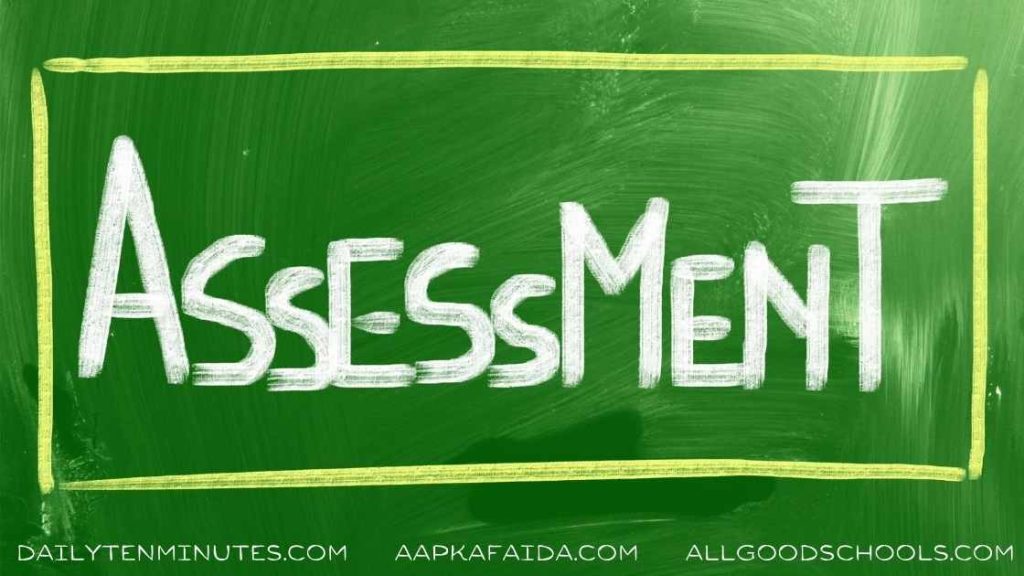Elevating Teaching Skills: The Ultimate Self-Assessment Guide for Teachers
Introduction
Teaching is a noble profession that demands continuous growth and improvement. As educators, it is crucial for us to engage in self-assessment to enhance our teaching skills and provide the best possible educational experience for our students. This article aims to guide teachers through a comprehensive self-assessment process, covering various aspects of their professional development. The Ultimate Self-Assessment Guide for Teachers
Reflecting on Professional Growth
Assessing Teaching Methods
- Evaluating instructional strategies: Teachers must critically analyze the effectiveness of their chosen teaching methods. Are they engaging? Do they cater to diverse learning styles? Continuous improvement in this area ensures that each lesson is a dynamic experience for students.
- Analyzing student engagement levels: Recognizing the level of student engagement during lessons allows teachers to adapt their approaches accordingly. Implementing a combination of discussion-based activities, hands-on exercises, and visual aids can boost student interest and participation.
- Incorporating diverse teaching techniques: Embracing different teaching techniques, such as project-based learning or flipped classrooms, encourages students’ creativity and critical thinking.
- Utilizing technology effectively: Integrating technology into the classroom can enhance learning experiences. Teachers should assess their proficiency in utilizing various technological tools and explore new ways to incorporate them into their lessons. Check this article that provides 10 AI tools for effective teaching and 12 Applications/Softwares
Evaluating Classroom Management
- Creating an inclusive and safe learning environment: Teachers should reflect on their ability to foster inclusivity in the classroom by accommodating diverse backgrounds, cultures, and learning abilities. Ensuring a safe and supportive space for all students promotes their overall well-being.
- Managing student behavior and discipline: Monitoring how effectively teachers handle student behavior and discipline is crucial. Reflecting on strategies for maintaining a positive classroom environment allows teachers to address individual disciplinary needs effectively. This is The Ultimate Self-Assessment Guide for Teachers
- Classrooms should be equipped with the latest technology and support learning environment. See this article that provides 20 Points For Great Classroom and Effective Teaching
Monitoring Learning Outcomes
- Assessing student progress and understanding: Regularly evaluating student progress helps teachers identify areas where their teaching methods may need improvement. Utilizing formative and summative assessments, such as quizzes and projects, enables teachers to gauge student comprehension and adjust their instructional approach accordingly.
- Adapting lesson plans to meet individual needs: Assessing the effectiveness of differentiated instruction is essential for catering to the diverse needs of students. Teachers should consider whether they are effectively customizing their lessons to accommodate different learning styles and abilities.
- Tracking and analyzing student data: Reflecting on the analysis of student data allows teachers to identify trends and patterns in their students’ performance. This data-driven approach can guide instructional decisions and interventions tailored to each student’s unique requirements. This is a self-assessment guide for teachers hence later part of this article will provide 20 teaching mistakes.
Enhancing Communication Skills
Effective Verbal Communication
- Encouraging classroom participation and discussion: Reflect on how effectively teachers promote a classroom atmosphere that encourages student engagement through active participation and meaningful discussions.
- Delivering clear and concise instructions: Assessing the clarity of instructions is important to ensure that students understand the tasks and goals. Being articulate and concise in verbal communication fosters an environment conducive to learning.
- Active listening and responding to student needs: Reflect on how well teachers engage in active listening, responding empathetically to students’ questions and concerns. Cultivating a safe space for dialogue and open communication contributes to a positive learning environment.

Non-Verbal Communication
- Utilizing body language effectively: Self-assessment should consider how well teachers use non-verbal cues, such as gestures and facial expressions, to communicate effectively with students and establish a rapport.
- Maintaining eye contact and approachable posture: Evaluation of maintaining eye contact and an approachable posture helps build trust and rapport between teachers and students.
- at later part of this article we will provide 20 Teaching Mistakes
Written Communication
- Providing constructive feedback to students: Assessing the quality of written feedback provided to students aids in improving their learning outcomes. Constructive criticism helps students understand how they can enhance their skills and knowledge.
- Engaging parents and guardians through written communication: Reflecting on the effectiveness of written communication with parents and guardians, such as newsletters or progress reports, strengthens the home-school partnership.
Developing Professional Relationships
Collaborating with Colleagues
- Sharing best practices and resources: Teachers should evaluate the extent to which they actively collaborate with colleagues, sharing innovative ideas, and resources. Building a network of supportive peers enhances professional growth.
- Seeking feedback and advice from fellow teachers: Reflecting on the act of actively seeking feedback and advice from fellow teachers plays a vital role in professional development. Learning from others’ experiences can offer valuable insights and improve teaching practices.
- Participating in professional development opportunities: Assessing participation in professional development activities, such as conferences or workshops, is crucial for staying updated with current educational trends and enriching teaching practices.
Building Relationships with Students
- Understanding individual strengths and challenges: Reflecting on how well teachers get to know their students helps identify their unique strengths and challenges. This understanding fosters a personalized learning environment.
- Creating a culture of respect and trust: Evaluating whether teachers cultivate a culture of respect and trust contributes to positive relationships, promoting effective teaching and learning.
- Fostering positive teacher-student relationships: Teachers should reflect on their ability to establish positive relationships with students, prioritizing empathy, support, and mentorship.

Engaging with Parents and Guardians
- Establishing open lines of communication: Self-assessment involves considering whether teachers effectively establish open lines of communication with parents and guardians. Encouraging parental involvement strengthens the home-school connection and supports student success.
- Involving parents in their child’s education: Reflecting on strategies for involving parents in their child’s education can lead to more successful outcomes. Inclusive activities, such as workshops or volunteering opportunities, create a sense of shared responsibility.
- Addressing concerns and providing support: Assessing how well teachers address concerns raised by parents and guardians helps build trust and maintain harmonious relationships.
Assessing Personal Growth and Well-being
Self-Reflection and Self-Care
- Practicing self-reflection on teaching practices: Reflection is a valuable tool for identifying areas of improvement. Allocating time for self-reflection allows teachers to better understand their strengths and weaknesses.
- Balancing personal and professional life: Reflect on whether teachers strike a healthy balance between personal and professional life commitments. Prioritizing self-care can prevent burnout and ensure sustained enthusiasm in the classroom.
- Achieving work-life harmony: Evaluating strategies for achieving work-life harmony helps maintain a positive mindset, avoiding excessive stress.
Continuous Professional Development
- Staying updated with current educational trends: Reflecting on efforts to stay informed about the latest educational trends, methodologies, and research ensures that teachers provide students with relevant and impactful learning experiences. see this article on current education trends for teachers
- Pursuing additional certifications or degrees: Assessing the desire for continual growth through the pursuit of additional certifications or advanced degrees demonstrates a commitment to professional development.
- Participating in conferences and workshops: Active involvement in educational conferences and workshops offers valuable opportunities for networking, learning from experts, and refining teaching skills.
Handling Stress and Burnout
- Recognizing signs of burnout: Reflect on personal stress levels and burnout indicators. Identifying early warning signs enables teachers to implement effective stress-management strategies.
- Implementing stress-management techniques: Self-assessment involves evaluating the effectiveness of stress-management techniques employed. Coping mechanisms, such as exercise or mindfulness practices, contribute to personal well-being.
- Seeking support and maintaining mental health: Reflect on whether teachers seek appropriate support mechanisms, such as counseling or peer support groups, to maintain mental health during challenging times.
Summary
Emphasizing the importance of self-assessment in teacher development is crucial for continuous improvement. By investing in their professional growth, educators can provide optimal learning experiences to their students.
Frequently Asked Questions (FAQs)
- How often should teachers conduct self-assessments?
- Self-assessments should ideally be conducted at regular intervals, such as the end of a semester or academic year. However, it can also be beneficial to engage in more frequent assessments throughout the year to track progress consistently.
- What are some recommended tools for self-assessment?
- Teachers can employ various tools for self-assessment, such as reflective journals, surveys or questionnaires, peer evaluations, and even digital platforms designed for educational self-assessment.
- How can self-assessment improve student learning outcomes?
- Self-assessment allows teachers to identify areas of improvement in their teaching practices, which, in turn, positively impacts student learning outcomes. By reflecting on their approaches and making necessary adjustments, teachers can address students’ needs more effectively.
- Is it beneficial for teachers to involve students in the assessment process?
- Yes, involving students in the assessment process promotes their ownership of learning. Encouraging self-assessment and reflection among students empowers them to be active participants in their education.
- Can self-assessment help teachers identify areas of improvement in their teaching practices?
- Absolutely! Self-assessment provides teachers with valuable insights into their teaching methods, strengths, and areas requiring improvement. By self-reflecting and analyzing their practices, teachers can make informed decisions to enhance their teaching skills.
- How can teachers tailor their professional development based on self-assessment results?
- Self-assessment results can guide teachers in identifying specific areas that require improvement. With this knowledge, educators can seek relevant professional development opportunities, such as workshops or courses, that address those areas and facilitate growth.
20 Teaching Mistakes
1. Lack of Preparation:
- Not planning lessons adequately.
- Failing to have necessary materials ready.
2. Poor Classroom Management:
- Inconsistent discipline.
- Not setting clear expectations.
3. Ignoring Student Diversity:
- Not accommodating different learning styles.
- Disregarding cultural or individual differences.
4. Overloading Information:
- Providing too much content in one session.
- Overwhelming students with assignments.
5. Not Being Approachable:
- Creating an intimidating classroom atmosphere.
- Not being open to student questions.
6. Monotone Delivery:
- Delivering lectures without enthusiasm.
- Not using engaging teaching methods.
7. Ignoring Student Feedback:
- Not valuing or incorporating student input.
- Dismissing concerns or suggestions.
8. Overemphasis on Testing:
- Teaching to the test rather than promoting deep understanding.
- Excessive focus on high-stakes exams.
9. Neglecting Technology:
- Not integrating relevant technology tools.
- Failing to adapt to changing technological trends.
10. Lack of Real-World Connections: – Not showing practical applications of the subject matter. – Disregarding the relevance of the content to students’ lives.
11. One-Size-Fits-All Approach: – Not differentiating instruction. – Assuming all students have the same needs and abilities.
12. Overburdening Homework: – Assigning excessive amounts of homework. – Not considering students’ other commitments.
13. Neglecting Emotional Well-being: – Not recognizing and addressing students’ emotional needs. – Ignoring signs of stress or mental health concerns.
14. Lack of Feedback: – Not providing timely and constructive feedback on assignments. – Failing to guide students towards improvement.
15. Neglecting Reflection: – Not reflecting on teaching methods and outcomes. – Disregarding opportunities for personal growth.
16. Rigid Curriculum: – Not adapting the curriculum based on student progress and interests. – Following a strict syllabus without flexibility.
17. Limited Active Learning: – Relying solely on lectures and not involving students actively. – Not incorporating group discussions or hands-on activities.
18. Neglecting Critical Thinking: – Not encouraging students to question and analyze information. – Focusing solely on memorization.
19. Favoritism: – Showing preference to certain students. – Treating students unequally.
20. Overloading Extracurricular Activities: – Assigning too many additional tasks or projects. – Not considering students’ time constraints.
If you are a teacher and considering to improve your school, college or university as well, check with these amazing articles
Remember, effective teaching is an ongoing process of improvement. Being aware of these potential mistakes and striving to avoid them can lead to a more positive and productive learning environment for both educators and students.
[/et_pb_text][et_pb_comments _builder_version=”4.22.1″ _module_preset=”default” hover_enabled=”0″ sticky_enabled=”0″][/et_pb_comments][/et_pb_column][et_pb_column _builder_version=”4.22.1″ _module_preset=”default” type=”1_3″][et_pb_blog _builder_version=”4.22.1″ _module_preset=”default” posts_number=”25″ include_categories=”99″ show_author=”off” show_date=”off” show_categories=”off” border_color_all_image=”#000000″ border_width_all_image=”1px” box_shadow_style_image=”preset1″ box_shadow_color_image=”#000000″ hover_enabled=”0″ sticky_enabled=”0″ offset_number=”1″][/et_pb_blog][/et_pb_column][/et_pb_row][et_pb_row _builder_version=”4.22.1″ _module_preset=”default”][et_pb_column _builder_version=”4.22.1″ _module_preset=”default” type=”4_4″][et_pb_post_slider _builder_version=”4.22.1″ _module_preset=”default” show_meta=”off” hover_enabled=”0″ sticky_enabled=”0″][/et_pb_post_slider][/et_pb_column][/et_pb_row][/et_pb_section]



